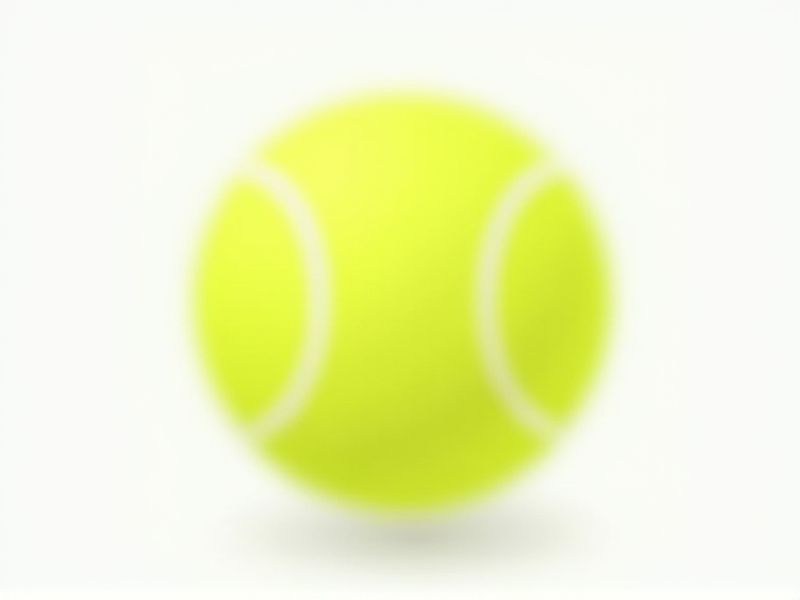
The standard dimensions of a tennis ball are carefully regulated to ensure fair play. According to the International Tennis Federation (ITF), a tennis ball must have a diameter between 6.54 cm (2.57 inches) and 6.86 cm (2.70 inches). Its weight should range from 56.0 grams (1.98 ounces) to 59.4 grams (2.10 ounces). Keeping these dimensions consistent helps maintain the speed, bounce, and overall playability that players expect on the court.
Diameter
The standard diameter of a tennis ball falls within the range of 6.54 to 6.86 centimeters (2.57 to 2.70 inches). This specification ensures uniformity across play, impacting both performance and player experience. A properly sized ball helps maintain consistent bounce and speed, which are crucial for competitive matches. Adhering to these standards allows players to expect reliable ball behavior during all types of play.
Weight
The standard weight of a tennis ball ranges from 56.0 to 59.4 grams, ensuring consistent performance across various playing conditions. This weight allows for optimal bounce and control during matches, contributing to the overall quality of the game. In professional tournaments, such as the Grand Slam events, adherence to these specifications is crucial for fairness and uniformity. When selecting a tennis ball, you should ensure it complies with these weight standards for the best on-court experience.
Felt Material
The felt material of a standard tennis ball consists predominantly of 55% nylon and 45% wool to enhance durability and performance on the court. This specific blend offers optimal playability, allowing for controlled spin and speed during matches. A standard tennis ball's diameter ranges from 6.54 to 6.86 centimeters, while the weight typically falls between 56.7 and 58.5 grams. The unique texture of the felt also contributes to the ball's aerodynamic properties, making it suitable for various playing surfaces.
Bounce Height
The bounce height of a standard tennis ball, when dropped from a height of 100 inches onto a concrete surface, should reach between 53 to 58 inches, ensuring optimal playability. This measurement directly impacts the dynamics of the game, influencing shot precision and player response times. Regulating the bounce enhances consistency in matches, contributing to an equitable playing experience. Your performance can vary significantly if the tennis balls deviate from these specifications, affecting overall game strategy.
Core Composition
The core composition of a standard tennis ball is crucial for its performance, comprising a rubber inner core that contributes to its bounce and durability. Each tennis ball typically measures 2.57 to 2.70 inches in diameter and needs to weigh between 56.0 to 59.4 grams to meet industry regulations. The outer felt covering, made from a blend of wool and nylon, enhances aerodynamics and provides a consistent playing surface. Understanding these specifications can improve your game by ensuring that you select the right tennis balls for practice or competition.
Pressurization
The standard pressurization for a regulation tennis ball is typically set at a gauge pressure of 12 to 14 psi. This pressurization is crucial as it affects the ball's bounce, speed, and overall performance on the court. A well-pressurized tennis ball maintains its resilience and ensures consistent play during matches that can last several hours. Regularly checking your tennis balls for optimal pressurization can significantly enhance your game experience and skill development.
Surface Texture
The surface texture of a tennis ball significantly influences its performance, with various types of felt contributing to distinct playing characteristics. The standard tennis ball features a combination of wool and nylon fibers, usually with a density of 60-80 fibers per square inch, which affects grip and durability. You may notice that premium brands utilize a tighter weave to enhance the ball's aerodynamics, allowing for greater speed and spin during matches. Over time, a well-maintained ball should retain its surface texture, which typically shows signs of wear after playing approximately 7-10 hours.
Firmness
The firmness of a tennis ball is essential for optimal performance during play, influencing both the speed and control of the ball. A standard tennis ball typically has a compression range of 23-30 PSI, ensuring an ideal bounce on various court surfaces. Players often prefer balls with a firmness rating that matches their skill level, allowing for better handling and precision in shots. When selecting a tennis ball, consider how its firmness enhances your game, making it a crucial factor in your overall performance.
Color
Tennis balls are predominantly yellow, specifically a fluorescent hue known as 'optic yellow,' which enhances visibility on the court. This color standard is regulated by the International Tennis Federation (ITF), ensuring consistency across competitive play. The vibrant yellow allows players and spectators to easily track the ball's trajectory during high-speed rallies. Your choice of tennis balls, whether for practice or competition, should align with this color standard to meet official requirements.
International Standards Compliance
The standard tennis ball must comply with International Tennis Federation (ITF) specifications, ensuring quality and consistency in performance. Typically, a regulation-sized tennis ball measures between 6.54 to 6.86 centimeters in diameter and weighs approximately 56.7 to 58.5 grams. The bounce height is crucial as it should rebound between 135 to 147 centimeters when dropped from a height of 2.54 meters on concrete. Understanding these standards can enhance your gameplay and provide assurance of equipment reliability during matches or practice sessions.
